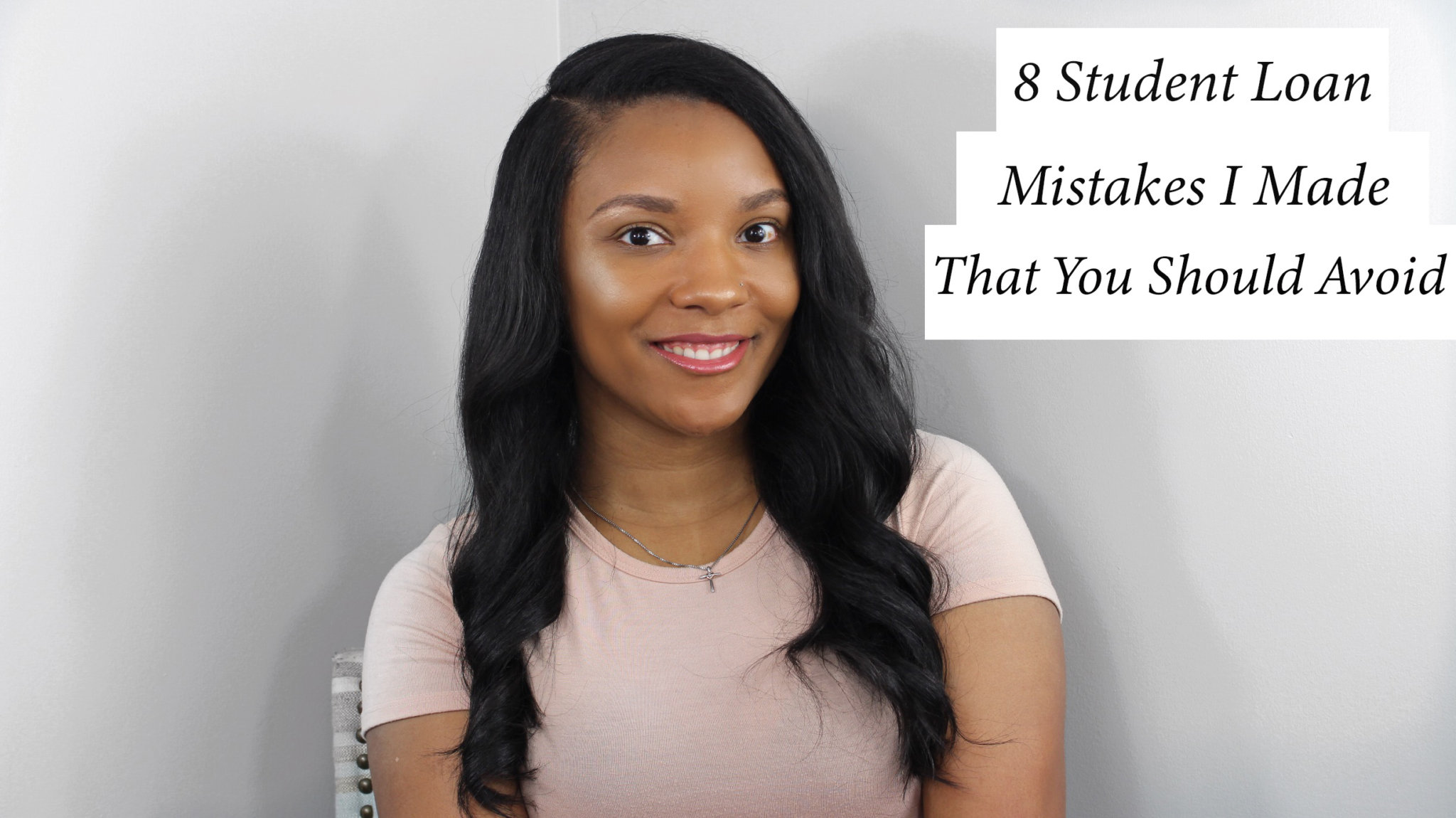I’ve made many mistakes in my short 32 years on this earth, but when it comes to student loans, I’ve really outdone myself. Let’s recap Part I of this series just a little bit. Undergrad and graduate school should have cost me a total of $50,000 ($10,000 X 3 years at the instate school, $20,000 for one year at the private school, and remember my employer covered my graduate degree). I received $15,000 in scholarships and grants. The total amount of loans I took out was $68,000 and the principal balance of those loans have now increased to $92,000. I only had to pay the school $35,000 but somehow, I am now paying almost triple that amount all because of these 8 mistakes I made. These are the 8 mistakes that cost me $92,000 in student loan debt that you should avoid.
1. Borrowing Any Money
The first mistake that I made was taking out student loans at all. Thinking about credit now, I understand compound interest and how it works. I now understand that $10,000 can turn into $15,000 in a blink of an eye. There are so many opportunities to fund a college education that I took for granted. I should have worked harder to get scholarships and grants. My son is now 12 years old in the 7th grade. I have found scholarshipowl.com to be a great resource to start. I will begin researching and applying for scholarships next year. If only I would have done this.
2. Less is More
There are instances where you actually NEED student loans. In my case, I could have reduced my mistakes by just taking out exactly what I needed in student loans. For the calculations above, I only needed to take out $35,000 in loans. My suggestion to you, if student loans are a must, only get what you need. Student loans are not meant to fund your lifestyle, it is for college related expenses only. :
3. Why Wait?
I enrolled in my first college course in 2005 and graduated with my undergraduate degree in 2010. I procrastinated and made my first student loan payment 6 years later in 2016. In hindsight, I should have made immediate payments towards my loans whenever possible. I know paying off your loans while simultaneously taking college courses can be difficult, maybe even impossible if you are not working. But, in my case, I had a part-time job with minimal living expenses. My recommendation is pay what you can, when you can. When income tax season comes around, throw your refund check towards your student loan. You’ll thank me for this later.
4. Forbearance or For Worse
I received several forbearances and deferments (hence the reason I didn’t start paying until 6 years later). If you meet certain eligibility requirements, deferment or forbearance allows you to temporarily stop making payments or to temporarily reduce your monthly payment amount for a specified period. The down side is the interest is still accruing (under forbearance and some deferred loans). As your interest continues to accrue, your principal balance will increase. Although you temporarily do not have to make payments (this feels like a good thing), once you begin monthly payments again, your payments will increase because your principal balance has increased. College doesn’t guarantee a job immediately after obtaining your degree, so I understand their may be hardships that force you to make this decision. Just make sure you are informed and understand the consequences and do the best you can to make payments.
5. Consolidating
Consolidating can be a good thing, it just depends on your circumstance. For me, it wasn’t the best idea. Consolidating is to combine all of your individual loans in to one big loan. So instead of owing multiple lenders for separate loans each month with different interest rates, your loans are transferred to one company and that company takes an average of the individual interest rates that will become your new interest rate for your consolidated loan. This was a bad idea for me because I had large loans with small interest rates as low as 4% and smaller loans with higher interest rates that I could have used the debt avalanche strategy to pay off and save money. Now, with all of my loans combine, I have no option to strategically pay off the loans with the highest interest rates first to save money.
6. Income Based Plans; Paying Minimums
Once again, I thought I was doing a good deed by paying my full billed amount each month, but nope! One day I looked at my balance and noticed that although I paid the billed amount on time each month, my balance had not been reduced AT ALL! I started off owing $85,000, and one year later, after paying minimums each month, I still owed $85,000. The amount was exactly the same. I was so annoyed. I realized that the amount I paid every month only covered the interest. Although I was annoyed, I wasn’t angry. I was ok with it because I was making large payments towards my other debts, with the understanding that I would get to the student loan eventually. Fast forward one year later, I reapplied for the IDR and this time the payment did not cover my interest in full but again, I knew I would get to it eventually. I was so focused on paying my other debts that I didn’t pay at least the interest on the loan which caused the loan to increase about $6,000. The income driven plans can be awesome and allow you to have lower monthly payments but, my recommendation is pay more than the minimum payments each month to avoid the interest increasing your principal balance.
7. Private School
As I mentioned in Part I, I attended a private school for one year. Even if it was only one year, it was entirely too expensive for my college plan. I could have earned the same degree going to a less expensive school. Do your research, find the school that is required for your career at the least cost to you.
8. A Goal Without a Plan is a Plan to Fail
I did not have a clear plan or passion for my career after college. I started my undergrad pursuing a nursing degree because I love helping people. But nursing was not my passion and I honestly could not see myself as a nurse. There are many career fields that could fulfill my passion for “helping people” but I just didn’t know what I wanted to be when I grew up. I actually just recently found my passion for personal finance 10 years after graduating. But what I should have done is soul searching and in the process, taken the core courses and saved myself time and money.
So, there you have it! Those are the 8 student loan mistakes that turned $35,000 to $68,000, and now $92,000. I’d love to hear some of the student loan mistakes you’ve made, what mistakes have you made when it comes to student loans? I have found
PS… we can continue this conversation on Instagram. Follow my page as I continue this journey to the Sweet Life of Financial Freedom.








Leave a Reply